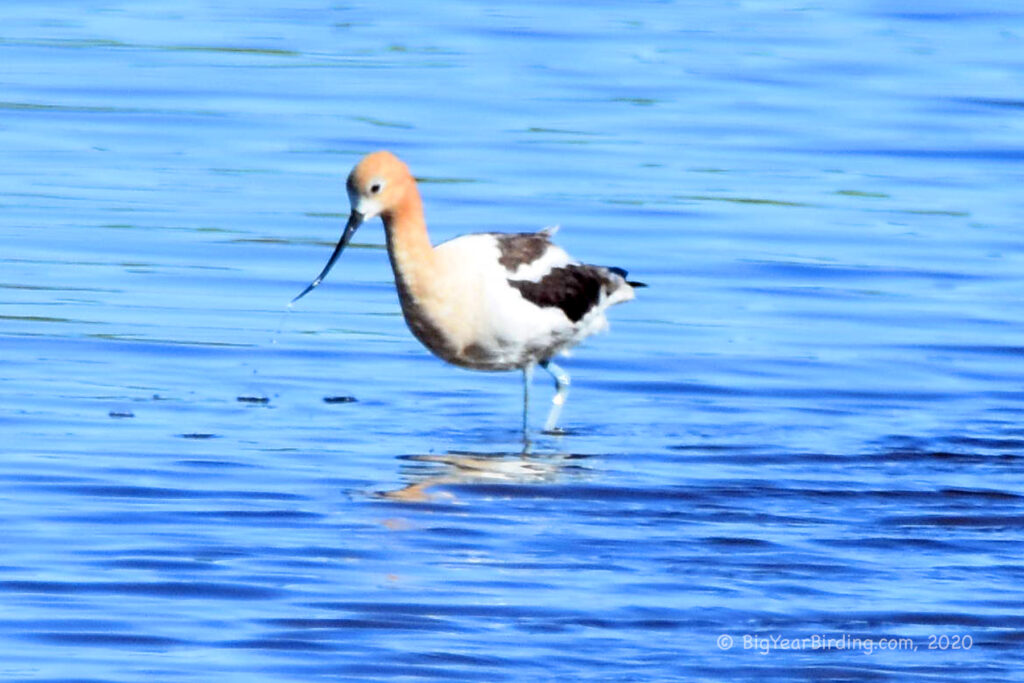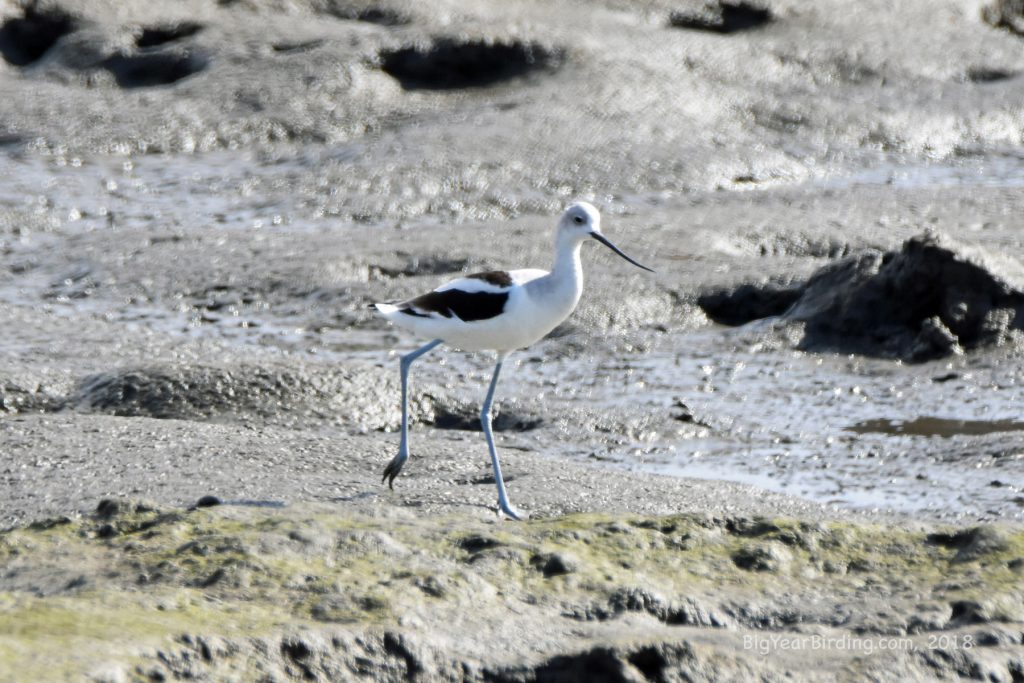
The American avocet (Recurvirostra americana) is a striking shorebird with distinct characteristics. They are about 16-20 inches long with a wingspan of 28-30 inches, and they weigh around 7-10 ounces. One of the most distinguishing field marks is their long, thin, upward-curved bill, which they use to sift through the mud for small invertebrates. They have a black and white patterned head and neck, with a cinnamon-colored neck and back, and white underparts. During breeding season, their neck and back feathers turn a more vibrant rusty red color.

American avocets are migratory birds, breeding in shallow freshwater wetlands and marshes in western North America, from the prairies of Canada to the marshes of California. They typically arrive at their breeding grounds in late March and early April and depart by late September. During the winter months, they migrate to the southern United States, Mexico, and Central America, with some individuals venturing as far south as Peru and Ecuador.
In addition to their striking appearance, American avocets are known for their unique feeding behavior. They wade through shallow water and mudflats, sweeping their bills back and forth in the water to locate small invertebrates such as crustaceans, insects, and mollusks. They are also known to stir up the water with their feet to flush out prey. This feeding behavior is thought to be one of the reasons for their upward-curved bill, which helps them sift through the mud more effectively.
During breeding season, American avocets perform an elaborate courtship display that involves synchronized wing-flapping, running, and head-bobbing. They form monogamous pairs and often nest in colonies, laying three to four eggs in a shallow scrape in the ground. Both parents take turns incubating the eggs and caring for the young.

Overall, the American avocet is a fascinating bird with a unique appearance and behavior. Their striking black and white plumage and upward-curved bill make them easy to spot, and their migration patterns and feeding habits make them an important part of many wetland ecosystems.

